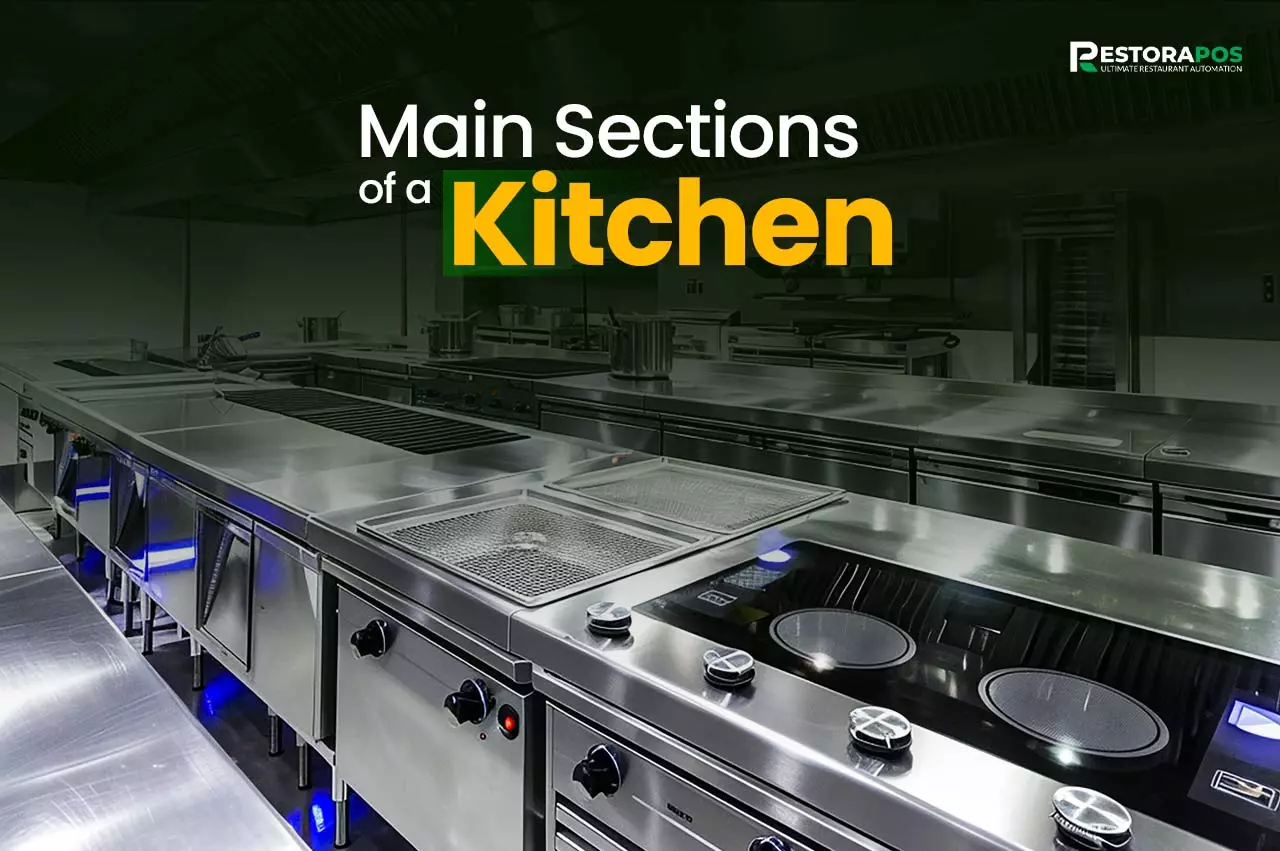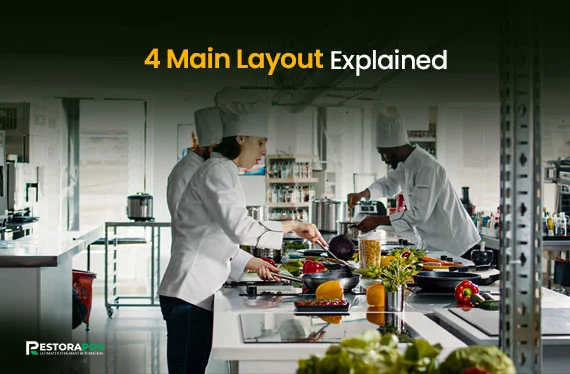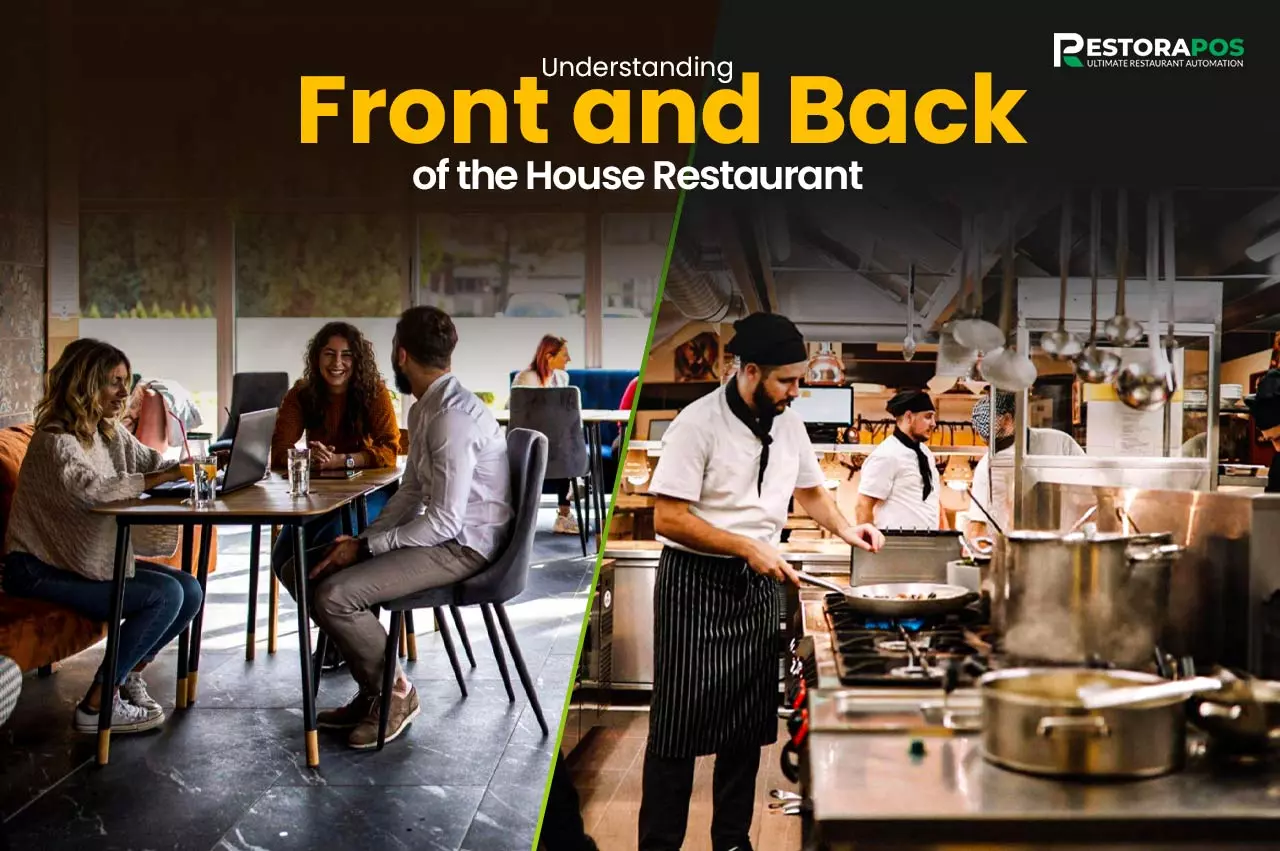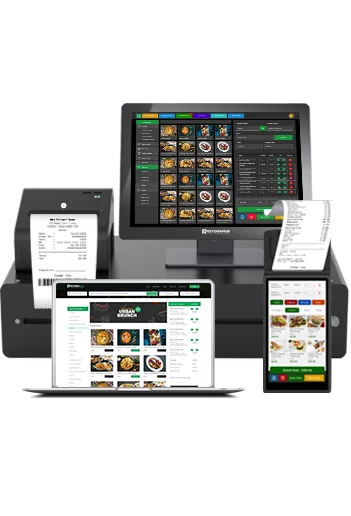What are the 4 Main Sections of a Kitchen

A well-designed kitchen is the heart of any restaurant, hotel, or culinary industry. So, to open a new restaurant or house kitchen, you must focus on kitchen sections. Multiple layouts can be used while designing the kitchen. It depends on several factors, such as space availability, working activity, etc.
However, you must pay attention to the kitchen types and sections to optimize the kitchen space better. So, you have to know what are the 4 main sections of a kitchen. Following those sections, you can get great kitchen floor plans when a kitchen is created.
What is kitchen Areas
The kitchen area is also called the back of the house. It is a place where all activities that provide food occur. It includes storing, cutting, preparing, cooking, decorating, and serving.
A good kitchen is responsible for providing the best quality food. It also increases the customer's experience. The kitchen area is divided into various sections, each individually specialized for different activities.
Some kitchen areas are the food preparation, pastry and bakery, dishwashing, plating, storage, cooking, and service areas. Specific people maintain different sections of a kitchen. When the kitchen is properly maintained, it increases the restaurant sales.
What are the 4 Main Sections of a Kitchen
As we know, a kitchen has multiple sections. Every section is designed and used for different working purposes. So, while creating the kitchen, better section placement is important. You must properly describe those sections and their activity so the designer understands your needs.
Here, we will explain what are the 4 main sections of a kitchen and their uses. Stay with us and customize the kitchen that you are looking for.
The 4 main section of a kitchen is:
- Storage Area
- Cooking Area
- Food Preparation Area
- Cleaning Area
Let's Get Into the Details.
1. Storage Area
The storage area is one of the major sections of a kitchen. It should be very clean and close to the cooking station so you can easily use it. The storage section mainly stores food, kitchen equipment, and other ingredients.
This storage area can be divided into two sections: cold storage and hot storage. Cold storage includes refrigerators or freezers; you can store perishable items such as dairy products, fish, and meat.
On the other hand, dry storage includes open door cabinets or drawers to store non-perishable items like grains, spices, and other products.
2. Cooking Area
The cooking area is a section where the actual cooking is being done. A cooking area should be large enough for the chef to move and cook food comfortably. It is close to the food preparation area.
The cooking area is equipped with different types of cooking equipment. This cooking equipment includes a stove, oven, micro oven, boiler, grillers, fryers, etc. So, the cooking area should be kept neat and clean to maintain the quality of the food.
Moreover, the cooking station needs to maintain some fire safety rules so that any fire-related occurrence does not happen.
3. Food Preparation Area
The food preparation section is where all the ingredients are ready before cooking. It should be large enough so that multiple food preparations can take place. This area is designed for maximum efficiency.
Moreover, the food preparation area needs to maintain safety standards so that the food remains hygienic. It includes multiple utensils such as cutting boards, stainless steel table with sink, mixing bowls, knives and spoons, countertops for chopping and slicing, etc.
Additionally, it consists of a food processor or blender to make quick food preparations. A well-occupied food preparation area reduces the cooking and food-making process and ensures a smooth workflow.
4. Cleaning Area
A restaurant kitchen cleaning area is also known as a dishwashing area. This section mainly cleans dirty utensils, dishes, and other things. The cleaning area includes a dishwasher, sink, drying racks, etc.
However, the cleaning area uses a sink to wash ingredients and other utensils manually. On the other hand, a dishwasher is an automated machine used for automated cleaning.
It can work faster than manual washing. Moreover, the drying racks are used to store the cleaning utensils. The cleaning area also needs to be cleaned so that the kitchen can maintain proper hygiene.
Kitchen Layout Types: 4 Main Layout Explained

To get the best kitchen experience, choose an ideal kitchen layout. The kitchen layout helps to arrange the kitchen materials in the best way. As we know, the kitchen comes in different sizes and shapes.
So, choosing a well-balanced layout that fits your restaurant or commercial kitchen is important. Here we will discuss what is the kitchen layout and types found in most restaurants.
1. Galley Kitchen Layout
The galley layout is one of the most popular kitchen layouts. It is a layout where you will find two workstations opposite each other. People love the galley kitchen idea because it maximizes the kitchen space.
It is commonly found in small restaurants or larger homes as a secondary kitchen. The galley kitchen layout can eliminate useless corners and achieve the best efficiency.
2. U-shaped Kitchen Layout
The U-shaped kitchen layout best suits large restaurants or food business kitchens. The idea of a U-shaped kitchen layout combines a galley and an L-shaped kitchen. It is the most expensive kitchen layout.
In a U-shaped kitchen, you will find three cabinets, which are joined and made U-shaped. When any busy restaurant wants to cook multiple items at a time, a U-shaped layout would be the best choice for them. This design has plenty of counter space and defined work zones, making it more popular.
3. One Wall Kitchen Layout
The one wall kitchen layout is the most simple and effective kitchen design. It is designed to be confined to a single wall. This type of kitchen layout is suitable for limited space.
One of the biggest advantages of creating a one wall kitchen is that it costs little and has more flexibility. One wall design covers a single wall, not the whole kitchen, which can minimize the actual kitchen footprint.
4. L-shaped Kitchen Layout
L-shaped kitchen layouts are becoming very popular among restaurants and homeowners. It is designed to maximize the kitchen area along with enough countertops.
The L-shaped kitchen has two cabinet systems that meet together and create a corner. It can create individual working zones. The stove is placed in one cabinet and the sink in another.
It can naturally divide the cooking and cleaning sections. This design is perfectly suitable for small to medium kitchens. Moreover, it works very well in open floor planning and efficiently using the working triangle.
Characteristics of a Good Kitchen
A kitchen is the powerhouse of a hotel, restaurant, or any food business. Designing a kitchen seems an easy task, but the reality is different. A restaurant kitchen is strongly connected to various factors. These include the drainage, water, gas, and electrical lines.
So, before jumping into the kitchen creation, you need to understand the character of an ideal kitchen features properly. Here, we have discussed the main characteristics of a good kitchen.
-
Functional Design
One of the most important characteristics of a good kitchen is functional design. It helps to minimize the staff's movement while preparing food. A well-functional design is also very much time-saving and reduces the risk of any accident in the kitchen.
Moreover, when a kitchen is well-designed, it also helps reduce food waste. So, we must focus on functional design while planning for the kitchen.
-
Standard Equipment
Standard equipment plays an important role in a restaurant kitchen. Every chef has some specific choice, but most use good quality equipment.
So, to get the best output from the kitchen, you must provide the equipment according to the chef's choice. Moreover, standard equipment reduces food preparation time and makes the kitchen more efficient.
-
Energy Efficiency
Another important characteristic of a good kitchen is energy efficiency. A kitchen design is directly related to energy consumption. So, while planning the kitchen, you must focus on the design to use less energy.
-
Good Ventilation
You can only work in a kitchen with a good ventilation system. It is one of the most vital characteristics of a good kitchen. As we know, the kitchen is a place that constantly works in fire, ovens, or other cooking equipment.
These produce smoke and steam, so the kitchen needs more ventilation for a proper working environment. As a result, you must build a kitchen with an appropriate ventilation system.
-
Smooth Maintenance
Every kitchen needs a smooth and easy maintenance and management system. As we know, the kitchen is where cooking, cutting, and other activities are done, and the kitchen gets easily dirty. How easily you can maintain your kitchen depends on kitchen arrangement and design. A good kitchen design allows its users to maintain it smoothly.
Frequently Asked Question(FAQ)
#1. What is a standard kitchen size?
Kitchen size depends on several factors. If you are planning a home kitchen, the size will be different. Alternatively, restaurants or hotel kitchens also have different sections of a restaurant kitchen dimensions. The kitchen size is not only in homes or restaurant types but also depends on the overall size of the houses or restaurants.
But on average, the standard size of a kitchen is 8 feet by 10 feet, which is 10 to 15% of overall sizes. On the other hand, commercial kitchen sections commonly found in hotels and restaurants can be between 200 and 1000 square feet, which is 25 to 30% of the total space.
#2. What is the Golden Triangle Rule?
The golden triangle rule in a kitchen refers to maintaining a proper distance between the refrigerator, fridge, and sink. These three parts are the main working place in a kitchen.
Golden triangle rules are used to create an efficient layout. It helps to make a fluent movement through the kitchen. Moreover, having an ideal golden triangle in the kitchen ensures maximum efficiency and makes your restaurant a good restaurant.
#3. What is basic kitchen safety?
Working in a kitchen is a challenging task. Kitchen tasks are connected to cutting, baking, and cooking. So, knowing and properly maintaining the kitchen safety rules are very important. If one can properly maintain kitchen safety rules, one can be protected from unwanted accidents or health hazards.
There are some basic kitchen safety rules.
- Wear the right clothes.
- Do not use a fork as a tool.
- Be alert while putting on fire.
- Protect yourself while boiling liquids.
- Be alert while cutting or chopping.
- Always keep your hands neat and clean.
Final Thought
Your query is, how many sections are in a kitchen? Or what are the 4 main sections of a kitchen? These are properly described in this article. You can choose the best kitchen design by following the layout and sections. Always remember a kitchen is the core of any restaurant or hotel. The more active the kitchen will be, the more success and profits will be generated. You must follow the kitchen design principles to succeed, no matter how small or big your kitchen is.






